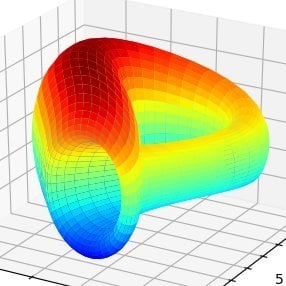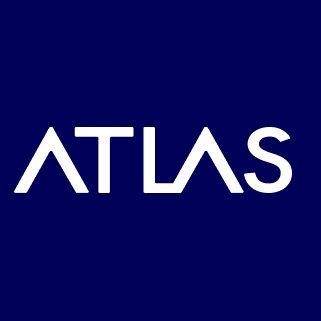RWA is about to launch, an overview of Frax's future product planning and potential impact
Original Title: RWA Launching Soon --- --- Future Product Planning and Potential Impact of Frax
Original Author: Yuuki, LD Capital
FXS has received positive market feedback due to the dynamic interest rate design of Frax Lend, which protects borrowers amidst the CRV turmoil; at the same time, the governance proposal initiated by Frax Protocol founder Sam on August 4 to advance the RWA business has also attracted some market attention. This article aims to outline Frax's future product planning (FRAX V3, frxETH V2, and Frax chain) and analyze its potential impacts.
1. Frax V3 --- --- Focus on the Development of RWA Business (Launching in August)
Currently, Frax founder Sam has initiated a proposal in the governance forum to expand the RWA business through FinresPBC, which is expected to launch in August. Key points are as follows:
FinresPBC is a non-profit organization established at the beginning of this year, so all profits generated from the assets held by Frax Protocol, after deducting operational costs, will be returned to the protocol;
FinresPBC does not participate in the development, operation, or governance of the Frax protocol, nor does it engage in any other profit-making activities (such as collateral, lending, staking, or other commercial activities) to ensure the purity and stability of the business;
Currently, FinresPBC's partner bank is Lead Bank, which provides compliant financial services for crypto protocols. FinresPBC is also actively expanding more crypto-friendly financial partners;
The future operational scope of FinresPBC includes: minting/redeeming USDP and USDC; earning dollar deposit income in IntraFi savings accounts insured by the Federal Deposit Insurance Corporation; purchasing U.S. Treasury bonds in separate accounts to earn interest;
FinresPBC will publish asset details, reserve reports, and operational costs monthly. FinresPBC can provide 24/7 access to custodial assets for the Frax protocol and use reserves to repurchase and burn FRAX or mint USDP and USDC to send to the Frax Protocol AMO as needed.
More structural details regarding the FRAX V3 business have not been officially disclosed, but some information released by the team in Telegram, forums, and interviews is summarized as follows:
Sam pointed out that the operating costs of FinresPBC will be significantly lower than those of Maker or other RWA protocols. If FinresPBC holds $500 million in assets for the Frax Protocol, the annual costs are expected to be no more than $200,000.
In an interview with Ourodoros Capital on July 28, Sam mentioned that Frax V3 would be launched within 30 days. Given that the foundational banking relationships for FinresPBC have already been established, it is speculated that its RWA business should also be implemented in August, currently awaiting DAO proposal voting and the determination of initial parameters.
In FRAX V3, Frax Bonds will be launched: Frax Protocol will continuously issue four bonds allowing anyone to purchase them, and the bonds will automatically convert into FRAX stablecoins upon maturity. Through FinresPBC, there is no upper limit on the scale of Frax Bonds; at the same time, Frax Bonds will be standard ERC20 tokens, and Frax Protocol will deploy liquidity for them in Curve, allowing them to be traded on the secondary market.
The Borrow-AMM design for FRAX liquidity in FRAX V3 does not require oracle price feeds, eliminating oracle risks.
Potential impacts:
- The scale of the FRAX stablecoin is currently being squeezed by Maker's aggressive promotion of RWA business, resulting in a decline, especially as Maker DSR's deposit rate has reached 8%, leading some market participants to shift to holding Dai for yield. The current yield in DSR is far higher than that of U.S. Treasury bonds due to the discrepancy between Maker's bond purchases and the protocol's Dai yield, and this yield appears unsustainable at present. The specific details of Frax's RWA business have not yet been disclosed, but due to its structural similarity to ETH staking, combined with currently known information, it is speculated that Frax's early RWA business may achieve high yields due to the combination of Treasury bond yields and CRV incentives to launch the product. In the medium to long term, if, as Sam said, FinresPBC's operating costs are significantly lower than competitors, then Frax's RWA business may possess long-term competitiveness, helping to expand the market share of the FRAX stablecoin.
Frax's market capitalization recently dropped from $1 billion to $813 million

- Maker has earned substantial profits through the U.S. Treasury RWA strategy and has been repurchasing MKR on-chain, which has been a major driver of the recent MKR price increase. Frax, due to its current stablecoin collateral, uses protocol income to enhance the collateral ratio (CR) of FRAX. If the RWA business can bring additional income to the Frax protocol and accelerate the replenishment of collateral, redirecting protocol income back to ve FXS holders or using it to repurchase FXS will support the price of FXS. Currently, the collateral ratio of FRAX is 94.5%; Frax Protocol holds $280 million in idle USDC, which, at a 5% yield, can generate $14 million annually, accounting for 75% of the current annual income of Frax.
Currently, the collateral ratio of FRAX is 94.5%

2. frxETH V2 --- --- Focus on Decentralization and Attracting Staking Capability (Launching in 50 Days)
Sam mentioned in a Twitter space that frxETH V2 is expected to launch in about 50 days; in the current frxETH V1, users' ETH is staked by nodes operated by the team, while the protocol takes a 10% cut. The advantage of frxETH V1 lies in its ability to leverage governance rights in the Curve ecosystem to effectively guide the liquidity of frxETH, while the dual-token model of frxETH and sfrxETH allows the Frax Ether system to achieve the highest yield in the market. This has helped Frax Ether rank among the top three LSD protocols as a newcomer in the LST field.
frxETH V1 Staking Flowchart:

In the future frxETH V2 version to be launched by the Frax protocol, the team will focus on ensuring high annual yields while addressing centralization issues. The overall design logic of frxETH V2 is similar to Rocket Pool, but with Frax's unique characteristics. The key differences are:
In Rocket Pool, the ETH deposited by users accumulates in a deposit pool and cannot generate yields until the validation is activated, which drags down the overall yield of rETH. Currently, this deposit pool has a cap of 18,000 ETH; whereas in the design of frxETH V2, user deposits will first be allocated to Curve AMO, and when nodes need user-side ETH for pairing, it will be allocated to the Lending Pool by Curve AMO. This way, idle ETH can earn trading fees and mining rewards in Curve AMO, thus improving the overall yield compared to Rocket Pool.
The node cut executed by Rocket Pool after the Atlas upgrade is basically fixed at 14%, while frxETH V2 plans to determine the node cut ratio through market adjustments. In frxETH V1, Frax is the most efficient and stable team in the market for node operations, and it will also join frxETH V2 to compete for node cuts through market mechanisms. The introduction of competitive mechanisms and the addition of efficient teams are expected to further benefit users, allowing them to achieve higher yields.
Currently, Frax Ether has the most efficient staking

Product Flowchart of frxETH V2

Regarding the frxETH product, in addition to focusing on frxETH V2, attention should also be paid to the launch of the redemption function. Currently, while sfrxETH has the highest yield in the market, its growth rate of 4.56% over the past month lags behind Lido's +5.17% and Rocket Pool's +7.47%. The main reason is that frxETH is currently non-redeemable and can only be exchanged for ETH on the secondary market through Curve, which amplifies the concerns of large whales and some users, leading them to turn to Lido or Rocket Pool.
3. Fraxchain --- --- Focus on Its Ecological Development and frxETH Consumption Accumulation (Launching in Early 2024)
Frax chain is a Layer 2 network based on Ethereum, intending to adopt a hybrid rollup solution (a combination of op rollup and zk rollup), providing developers with the easy coding environment brought by op while offering users the finality, security, and decentralization provided by zk. As one of the top three LSD protocols, Frax chain and frxETH will also generate synergistic effects. Frax chain will use frxETH as gas fees, which will reduce the conversion of frxETH to sfrxETH, thereby helping the Frax protocol provide higher staking yields to compete for market share. In the planning, the complete DeFi product matrix of the Frax protocol will migrate to Frax chain to reduce gas fees while bringing initial traffic and funds to Frax chain. It is important to note that the positioning of Frax chain is not as an application chain; while supporting the current stablecoin ecosystem of Frax, it also aims to expand the ecosystem and increase adoption to better benefit the protocol's native ecology.
In summary, Frax possesses a lean and highly capable team, efficient execution, and rapid product rollout, making it worthy of attention as FRAX V3 and frxETH V2 are launched.















